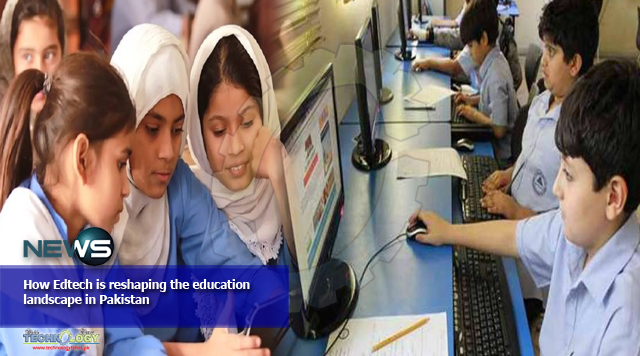Edtech : Since the outbreak of Covid-19 this year, students of all ages have been confined to their homes for months on end. Lower income schools, in particular,

Are having a difficult time keeping their students engaged, and most if not all, do not even have a Learning Management System in place for basic remote information sharing with students and/or parents. Those students attending schools that do have such management systems in place (even in higher education) have expressed dissatisfaction over the quality of learning being imparted.
The government’s attempt at mass instruction that includes a national public TV channel to broadcast Pakistani school lessons has also raised a lot of questions. While it covers content from kindergarten to high school with one hour of curriculum for each grade, students have to take turns to watch their lessons, and we have yet to measure the impact of this approach on learning outcomes.
On the other hand, the Sindh government launched an Android mobile learning app for students Kindergarten through grade 5 in late May this year, which is not even reaching 50 percent of the overall student population in the province. Similarly, higher education is suffering the same fate at the moment. Due to countrywide lockdowns, the Higher Education Commission (HEC) announced on March 30th that all educational institutions (with sufficient resources and robust learning management systems) would start delivering online courses.
At this point, many affluent private educational institutions (at all levels) have already moved to remote learning solutions, HEC’s directive highlighted a serious lack (PDF) of contingency planning using good quality remote learning methods among most higher education institutions. This is something that predominantly affects students from lower socio-economic strata (SES) much more than it does any other strata.
On top of all of this, Pakistan has the second-highest out of school children (OOSC) rate (more than 40 ) in the world and out of those going to school less than 20 percent of the 3rd graders can read and comprehend a short passage. Therefore, the government’s efforts, while a step in the right direction, are far from sufficient and seem very fragmented in the way they are being executed.
For one, there is no unified national education strategy that has come out since the pandemic despite some preliminary evidence suggesting that the virus will have a longer-term impact than we originally predicted. On the other hand, Pakistan’s education industry, which is typically slow to innovate has become highly volatile in the aftermath of Covid-19 and has therefore created a number of opportunities for digital and tech-based learning solutions.
OVERVIEW OF COMMON EDTECH BUSINESS MODELS
Invest2Innovate’s earlier study on Covid-19 and its impact on Pakistani startups reported that edtech was among the few sectors that did not suspend services since the pandemic. Out of the edtech startups that participated in the study, 69 percent (9/13) reported not suspending services because of the pandemic. For this newsletter, i2i conducted a follow-on survey to understand these edtech startups’ offerings and to see where they stood a few more months into the lockdown.
Out of 10 edtech startups that responded, the majority operated on either a B2B (33 percent) or B2C (29 percent) model, whereas B2NGO (14 percent), B2G (9 percent), and blended (9 percent) models were the less common ones. It is important to note that B2NGO models are commonly seen in developing countries like Pakistan, where not a lot of formal investment is made into education/edtech businesses and often the companies themselves opt for development funds etc. as they provide wider and easier access to not only grant funding but also to public sector schools.
This news was originally published at menabytes.com